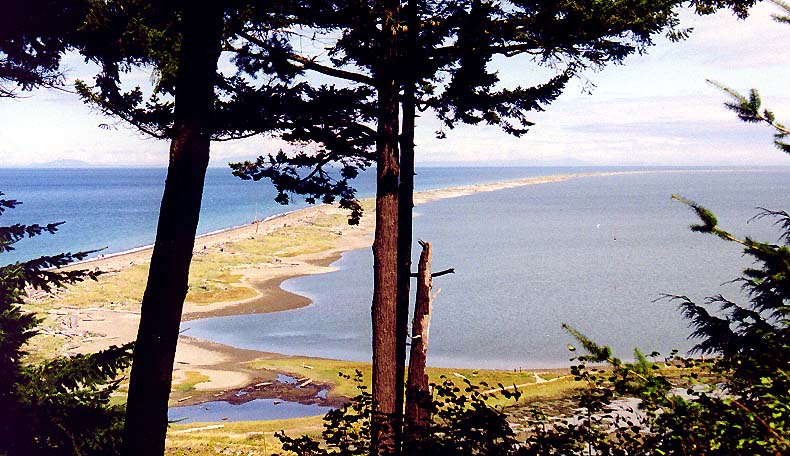
.

On our trip to Puget Sound and the Strait of Juan de Fuca, ReefNews visited Dungeness National Wildlife Refuge. We parked at the top of a cliff and walked down a hillside through towering pine trees as eagles flew through the sky. Halfway down the hill we had this tremendous view of the Dungeness Spit, barely 100 yards wide but stretching 5 miles into the Pacific Ocean. The narrow strip of sand is a ridge that crests 10 to 20 feet above sea level. The sand is held in place by delicate sea grasses and piles of driftwood. Dungeness (say "dungeon-ess") National Wildlife Refuge includes all of Dungeness Spit and Graveyard Spit, and also includes much of the shallow water around Graveyard Spit on the south side of Dungeness Spit.
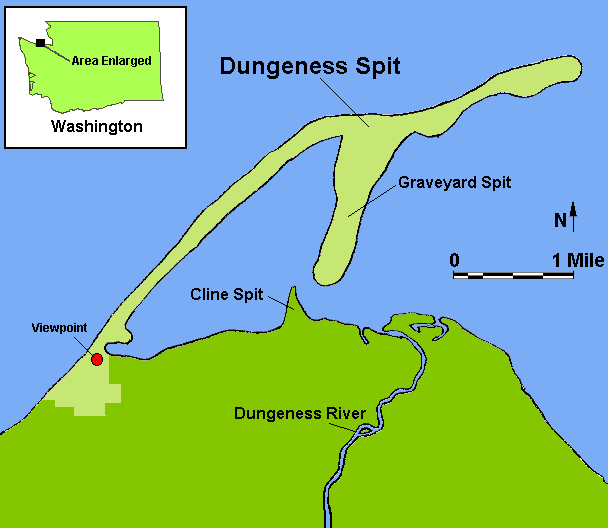
Dungeness Spit is the world's longest spit into the ocean. A "spit" is a narrow peninsula of land that sticks out a long way into the ocean. Over five miles long, Dungeness Spit is the longest spit anywhere. Dungeness Spit sticks out from the Washington state coastline into the Strait of Juan de Fuca, an inlet from the Pacific Ocean.
Thousands of species of plants and animals are found on Dungeness Spit's narrow strip of sand. Shorebirds wade into the shallow water to hunt for fish, crabs, snails, and shellfish. Eagles dive into the water to catch fish. Harbor seals crawl onto the sandy beach to rest and play, and in the summertime give birth and raise their pups. The shallow waters south of the spit are filled with gardens of eelgrass, where baby salmon and steelhead fishes grow up. And the muddy ocean bottom is habitat for oysters and geoducks (say "gooey-duck").
 | A Western Seagull sits on top of a driftwood log on Dungeness Spit. Washed away from the logging industry along the rivers that feed into Puget Sound and the Strait of Juan de Fuca, these logs pile up on the spit. The logs help hold the sand in place and become homes and perches for many species of sea birds. |
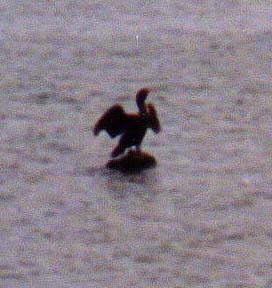 | A Cormorant dries its wings from its perch on a rock in the protected waters south of Dungeness Spit. Cormorants are terrific fish catchers. They dive under the water and catch small fish in their beaks. After diving, they have to dry their wings before they can fly very far. Cormorants find a safe perch in the sunshine where they can stand and spread their wings to dry them. |
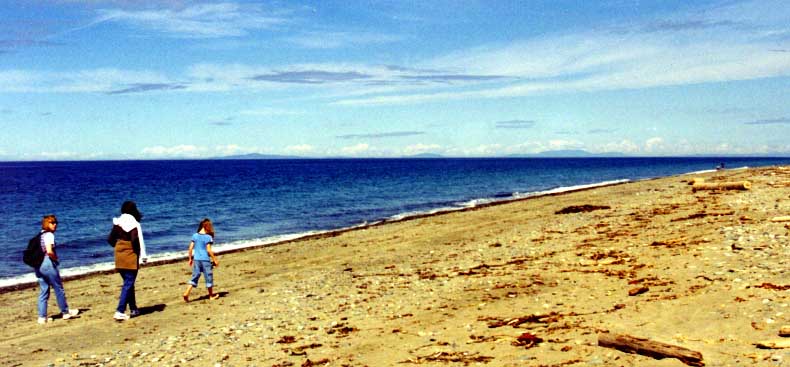
A hiking trail takes visitors the entire length of Dungeness Spit.
On a clear day, you can see the mountains of Canada 15 miles to the north across the Strait of Juan de Fuca.
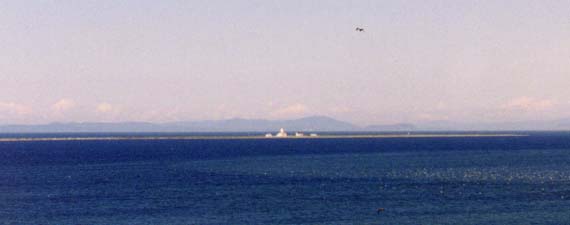
At the end of the spit, the New Dungeness Lighthouse National Historic Site
warns ships of the hazard of the spit and the surrounding shallow waters.
Dungeness National Wildlife Refuge is protected by the U.S. Department of the Interior and the U.S. Fish and Wildlife Service.